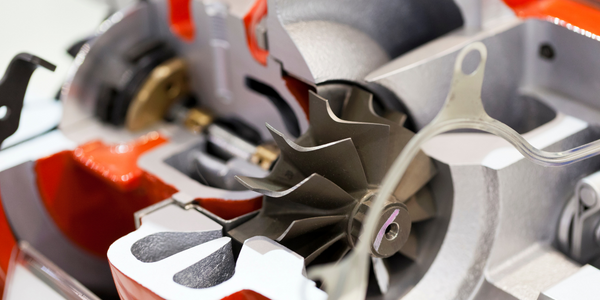
Technology Category
- Analytics & Modeling - Edge Analytics
- Processors & Edge Intelligence - Embedded & Edge Computers
Use Cases
- Edge Computing & Edge Intelligence
The Challenge
A test environment is needed for algorithms and architectures that meets a common set of requirements for many testbeds (see "Testbed in Depth")
GOAL:
A test facility that can be configured into complex edge compute environments, in order to further the state-of-the-art in edge analytics and algorithms
The Solution
*This is an IIC testbed currently in progress.*
LEAD MEMBERS:
Hewlett Packard Enterprise, Real-Time Innovations
MARKET SEGMENT:
Vertical industry testbeds
TESTBED INTRODUCTION:
Many emerging industrial IoT applications require coordinated, real-time analytics at the "edge", using algorithms that require a scale of computation and data volume/velocity previously seen only in the data center. Frequently, the networks connecting these machines do not provide sufficient capability, bandwidth, reliability, or cost structure to enable analytics-based control or coordination algorithms to run in a separate location from the machines.
Industrial Internet Consortium members Hewlett-Packard and Real-Time Innovation have joined together on the Edge Intelligence Testbed. The primary objective of the Edge Intelligence Testbed is to significantly accelerate the development of edge architectures and algorithms by removing the barriers that many developers face: access to a wide variety of advanced compute hardware and software configurable to directly resemble state-of-the-art edge systems at very low cost to the tester/developer.
LEAD MEMBERS:
Hewlett Packard Enterprise, Real-Time Innovations
MARKET SEGMENT:
Vertical industry testbeds
TESTBED INTRODUCTION:
Many emerging industrial IoT applications require coordinated, real-time analytics at the "edge", using algorithms that require a scale of computation and data volume/velocity previously seen only in the data center. Frequently, the networks connecting these machines do not provide sufficient capability, bandwidth, reliability, or cost structure to enable analytics-based control or coordination algorithms to run in a separate location from the machines.
Industrial Internet Consortium members Hewlett-Packard and Real-Time Innovation have joined together on the Edge Intelligence Testbed. The primary objective of the Edge Intelligence Testbed is to significantly accelerate the development of edge architectures and algorithms by removing the barriers that many developers face: access to a wide variety of advanced compute hardware and software configurable to directly resemble state-of-the-art edge systems at very low cost to the tester/developer.
Operational Impact

Case Study missing?
Start adding your own!
Register with your work email and create a new case study profile for your business.
Related Case Studies.

Case Study
VIPER Aid to Acoustic Positioning
Applied Acoustics Easytrak Portable acoustic navigation system can undertake a wide range of tracking and positioning tasks for seabed mapping, towfish tracking and controlling robotic vehicles. It is also used to locate subsea divers, so is critical to the safety of personnel. To deal with difficult operating environment, a robust single board computer is required.

Case Study
A repeatable model for industrial data intelligence
Exara’s oil and gas client required a reliable way to gather, store, and process data from sophisticated machine assets in remote oil field sites. These harsh, real world environments present significant challenges for high performance computing devices.

Case Study
A Smarter Brain for Your Train…
Have you ever felt overloaded by too much sensory input? The results can be problematic, even risky if you’re driving at the time. The same holds true for trains, ships, oil rigs, and many other industrial assets. The data processing challenges on these complex machines are growing rapidly as the number of sensors increases; yet so are the opportunities to transform operations by using all the available data effectively. A modern locomotive, for example, has as many as 200 sensors generating more than a billion data points per second.

Case Study
The Power of Balancing Technology
Accurate balancing of the turbochargers used in cars and commercial vehicles is vital to ensure engine efficiency and longevity and it is carried out in both the manufacturing and remanufacturing of these units. If not measured and corrected through the balancing process, turbochargers will be noisy and in severe cases bearing failure can occur.

Case Study
Mitsubishi Electric's Edge Computing Solution Powered by Wind River VxWorks
Mitsubishi Electric Corporation, a global leader in factory automation (FA) applications, identified edge computing as a critical component of the Industrial Internet of Things (IIoT). The company aimed to enhance device and data security, reduce data traffic to the cloud, and enable faster response to network or device issues. In 2018, Mitsubishi Electric launched its first line of industrial hardware products designed for edge computing, the MELIPC Series. The primary development goals for MELIPC were to support the type of edge computing promoted by Mitsubishi Electric and to introduce advanced vision technology for device control. The flagship computer of the MELIPC line, the MI5000, was designed to combine real-time equipment control with high-speed data collection, processing, diagnosis, and feedback in a single machine. However, the development team needed a real-time control platform that could seamlessly integrate real-time control with proven analytic and diagnostic applications.

---nyse--hpe_1.jpg)


